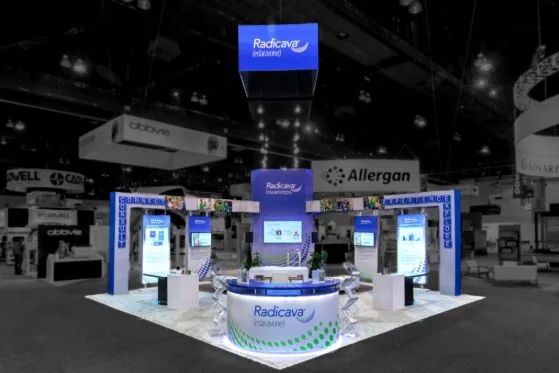Durable, Washable, Stick on clothing labels
Labels are becoming increasingly available in daycare centers and schools, nursing homes and retirement facilities, and the industrial workwear market. This presents an opportunity for label converters, material printers, and label distributors to enter a market segment that is both easy to use and quick to apply on-site, without sewing or ironing.
Label material manufacturer great k2 is a leading supplier of high-performance self-adhesive label materials designed for self-adhesive apparel and accessory labels. Great k2’s label materials are widely used due to their exceptional washability, excellent printability, and the ability to be custom-cut to suit apparel label converters. B2b buyers or distributors can scale up production and increase profit margins by relying on a reliable supplier of washable label raw materials.
Stick on clothing labels are easy to apply and remove. They are rapidly becoming a popular choice for a variety of household and industrial applications.
Stick on clothing labels vs. Fabric clothing labels
“Adhesive” Or “Adhesive” Clothing labels can be considered synonymous with the more general “Transferable labels,” But they differ from traditional methods of applying labels to fabric in some key ways. To apply a fabric label to clothing, users need to know how to apply it using sewing, heat pressing, or ironing. Sewing and ironing can be time-consuming and cumbersome for large-scale applications.
In contrast, stick on clothing labels use a self-adhesive backing that can simply be peeled off and applied manually to the desired location. No heat or other tools are required. This makes transferable clothing labels a more attractive option for individual homes, nurseries, or schools.
Advantages of stick on clothing labels
Stick on clothing labels, also known as “Transferable labels,” Are adhesive-backed labels that are applied directly to fabric or textiles.
Transferable clothing labels differ from sew-on or iron-on labels because they are applied by hand, not by machine. This makes them more attractive for the home market, children’s clothing market, or for specialty projects where labels may need to be frequently moved or changed.
Greatk2’s key advantages
K2’s self-adhesive label material is made from high-quality vinyl coated on one side with a skin-friendly, high-tack adhesive. The vinyl base offers excellent print quality and washability, while the adhesive is highly compatible with most apparel fabrics, including cotton, polyester, and blends. The adhesive adheres securely without tearing or stretching the fabric, and leaves no residue upon removal.
Washability is a key quality challenge in the self-adhesive apparel label market. Great k2’s products have been independently tested and proven to withstand over 30 machine washes, a critical requirement for daycare, nursing care, and other high-turnover industries.
The raw material is also fully compatible with inkjet, laser, and thermal transfer printers, offering b2b customers full design flexibility in their end-use applications. Labels can be colorful and detailed, or simple black and white text or barcodes for batch processing or dry cleaning. The material supports full-color, high-resolution printing, as well as laser-readable monochrome codes and trims. K2’s self-adhesive label stock is available in roll form, making it easy for b2b converters or distributors to process using existing label cutting, printing, or packaging equipment. The stock can be used for both short-run digital label printing and high-speed industrial label processing and packaging.
Distributors can offer great k2’s label stock as a private-label product, a white-label product, or with additional services, such as custom printing or variable data printing for direct mail and e-commerce.
For b2b buyers or distributors, these features enable them to scale and offer private-label solutions for home and industrial apparel labeling.
Apparel sticker label applications
Stick on clothing labels are increasingly popular in the following market segments. Distributors should consider which segments align well with their existing b2b customers or internal capabilities and develop growth targets based on their business strengths.
Schools and childcare
Stick on clothing labels are becoming increasingly popular in schools, childcare centers, and other markets where there is a high demand for quick, easy, and easy-to-read labeling methods. Children’s labels often require specific information beyond the name, such as class, grade, allergies, and parent contact information.
Seniors and nursing homes
The clothing labeling needs of nursing homes and nursing homes are very similar to those of the childcare and daycare industries. In all cases, the key requirements for clothing labels are legibility, washability, and quick application and removal.
Labels are often removed during the washing and care process in centralized laundries or replaced during repackaging of goods in and out of the shipping process. Adult clothing labels are also becoming increasingly common and can be applied to clothing labels or directly to the garment.
Workwear and apparel branding
Industrial clothing or workwear is another growing market segment for stick on clothing labels. In addition to quick application by the user, brands also require washability to ensure long-term use. Labels are often reused during bagging or packaging.
As a symbol of uniform or brand, quality and durability are crucial, as is the ability to print or customize graphics with variable data. Industrial or workwear clothing often utilizes simpler, single-color graphics with a barcode or unique garment id number.
Outdoor apparel and accessories
Outdoor and camping labels are another area where labels are exposed to intense sunlight or other weatherproof conditions. Labels can also be applied to tents or other equipment, where users may prefer a more permanent adhesive. For these market segments, higher durability may be required, and brands are more willing to pay a premium for this added quality. Tough and weatherproof labels are also becoming increasingly popular for outdoor labels or heavy-duty uniforms.
In many cases, applying labels directly to fabric can achieve a cleaner appearance or avoid interfering with the garment’s structure. Weatherproof and high-tack adhesive materials are also used for specialized labels on outdoor gear and equipment.
Adhesive labels can also be used for fabric identification and sorting in industrial laundry operations, or for centralized bagging and packaging in schools, daycare centers, and senior living facilities. Garment inspection labels may require a balance between ease of use for non-specialized workers and a degree of durability.
Fabric identification and sorting labels can also be printed with unique barcodes or garment ids for comprehensive data management and efficient workflows. High-quality, legible labels in rich colors also appeal to industrial projects and help maintain brand image.




